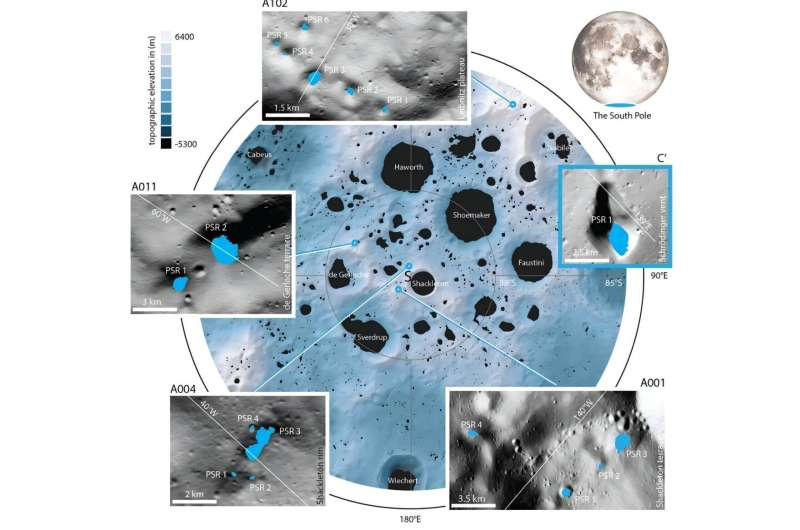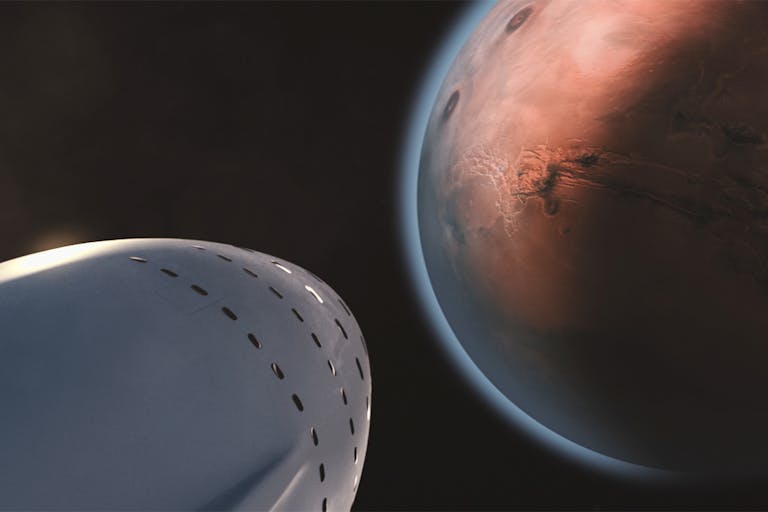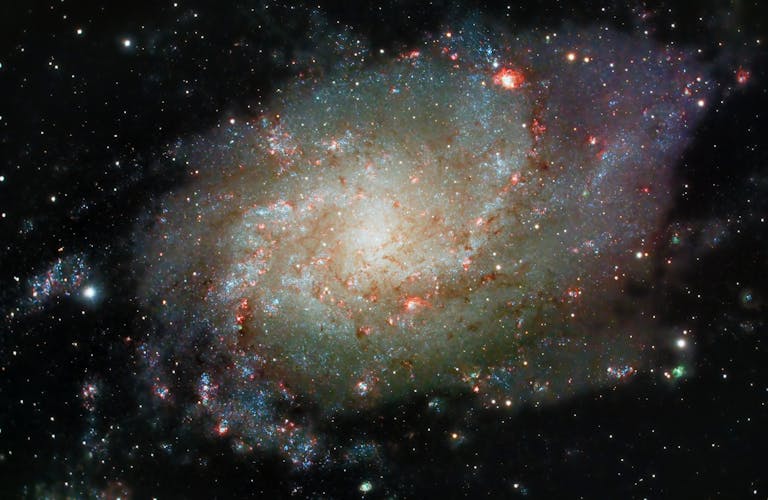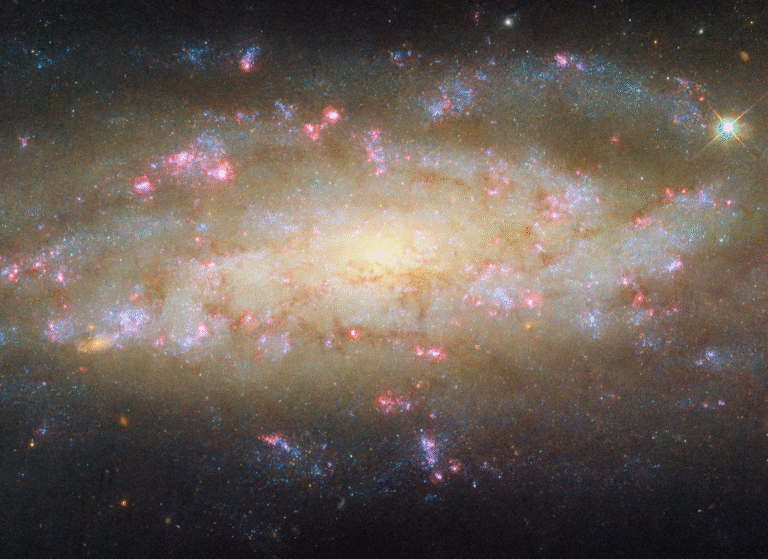Building an Optical Interferometer on the Moon Could Redefine How We See the Universe

The idea of setting up a powerful optical interferometer on the Moon is steadily moving from the realm of imagination to serious scientific discussion. A new study by the W. M. Keck Institute for Space Studies (KISS), titled Astronomical Optical Interferometry from the Lunar Surface, has taken a deep dive into whether such a project is technically, scientifically, and logistically possible. The research was led by experts from the Lowell Observatory, Caltech, and NASA’s Jet Propulsion Laboratory, and involved participants from NASA, JAXA, several universities, and private space companies.
The report, published on arXiv in October 2025, builds upon decades of discussions about building telescopes on the Moon and evaluates both the enormous potential and practical challenges of doing so.
Why Put a Telescope on the Moon?
On Earth, our atmosphere is a constant obstacle to astronomical observations. Cloudy skies block visibility, and the turbulent motion of air distorts starlight, forcing ground-based observatories to use complex adaptive optics to correct the view.
While space telescopes like Hubble and JWST have solved these problems, they come with their own set of challenges — mainly cost, complexity, and lack of maintenance options once they’re deployed beyond Earth orbit.
That’s where the Moon comes in. The lunar surface offers a stable platform with no atmosphere, allowing astronomers to observe the universe with unmatched clarity. It provides long, uninterrupted nights, steady temperature regions (especially near the poles), and the opportunity to establish extremely large baselines — the distances between telescope mirrors or elements that determine the resolving power of an interferometer.
A lunar observatory could outperform even the largest Earth-based facilities and do so at a potentially lower cost than building multiple large free-flying telescopes in space.
What Exactly Is an Optical Interferometer?
An optical interferometer is a system that combines light collected from multiple small telescopes to act as one massive telescope. The result is incredibly high spatial resolution, allowing astronomers to see fine details that no single telescope could achieve alone.
Earth already has successful interferometric facilities such as the Very Large Telescope Interferometer (VLTI) in Chile and the CHARA Array in Georgia, USA. These observatories have demonstrated how powerful the technique can be — but their performance is limited by the atmosphere.
Placing an interferometer on the Moon would change that completely. Without atmospheric interference, the lunar interferometer could use smaller mirrors (10–50 times smaller) yet achieve far greater resolution and sensitivity than anything on Earth.
What the KISS Report Explores
The new study, which came out of a KISS workshop held in November 2024, carefully examines the pros, cons, and technical hurdles of building an optical interferometer on the lunar surface.
Advantages identified in the report include:
- No atmosphere, meaning crystal-clear images without the need for adaptive optics.
- Longer coherent integration times, allowing more precise data collection.
- Stable ground baselines, enabling consistent long-term measurements.
- Potential for smaller, more affordable mirrors, thanks to better light coherence.
But it also highlights some serious challenges that scientists and engineers would need to overcome before such a project becomes real.
The Dust Problem
The Moon’s surface is blanketed in regolith, a layer of sharp, electrostatically charged dust particles. These grains are notorious for sticking to surfaces, infiltrating joints and seals, and damaging delicate instruments — a problem that even the Apollo astronauts encountered.
However, the report notes that this issue might not be as devastating as once feared. New dust-removal technologies, such as Electrodynamic Dust Shields, have already been tested successfully. For instance, NASA’s Firefly Blue Ghost Mission 1 demonstrated that such shields can effectively clear dust from spacecraft surfaces. Similarly, China’s Chang’e 3 lander operated an ultraviolet telescope for three years without significant dust interference.
This gives scientists confidence that lunar dust management is an engineering challenge, not a showstopper.
Dealing with Extreme Temperatures
Temperature fluctuations on the Moon are brutal — from scorching sunlight to freezing darkness. These swings can damage optics and electronics that require thermal stability.
The KISS report discusses various thermal control solutions, including:
- Burying components in the lunar regolith to insulate them.
- Using active and passive cooling systems tailored to specific sites.
- Locating observatories in permanently shadowed regions (PSRs) near the lunar poles, which experience minimal temperature variation.
PSRs are particularly attractive because they remain cold and stable, making them ideal for infrared telescopes that must stay cool. However, these regions may also harbor water ice deposits, which could present new challenges such as frost accumulation on mirrors.
The Case for Permanently Shadowed Regions
Permanently shadowed regions are among the most promising spots for a lunar interferometer. Their consistent cold temperatures reduce the need for heavy cooling systems, and their natural shielding from sunlight minimizes heat expansion problems.
On the downside, PSRs are difficult to access, have limited power options due to lack of sunlight, and may require advanced robotic deployment systems to set up equipment safely.
Still, many in the scientific community believe the trade-offs are worth it.
The Science Payoff
The scientific potential of a lunar optical interferometer is enormous. The report outlines several major areas of research that could benefit:
- Black Hole Mergers: It could help solve the “final parsec problem”, the mysterious last stage of how supermassive black holes merge.
- Planet Formation: It could directly observe the inner regions of protoplanetary disks, where planets are born — something current telescopes can’t resolve clearly.
- Exoplanet Studies: By providing microarcsecond-level precision, the interferometer could detect and characterize true Earth-like exoplanets and analyze their atmospheres.
- Stellar Physics: It could map stellar surfaces and brown dwarfs, study stellar explosions, and refine measurements of the extragalactic distance scale.
- Astrometry: It could measure the positions and motions of stars with unprecedented accuracy, supporting missions like NASA’s upcoming Habitable Worlds Observatory (HWO).
In short, this instrument could help answer some of astronomy’s biggest unanswered questions — from how planets form to how galaxies evolve.
Concepts and Future Missions
To demonstrate feasibility, several smaller mission concepts are already being discussed. One such idea is the Moon Lightweight Interior and Telecoms Experiment (MoonLITE). It proposes a lander and rover system that would place two small interferometer elements about 100 meters apart on the lunar surface.
Although it would only operate for a short duration, MoonLITE could prove that high-precision optical interferometry is viable on the Moon. Another idea is the Artemis-enabled Stellar Imager (AeSI), a more ambitious concept that envisions a large, multi-element UV/optical interferometer capable of resolving detailed stellar surfaces.
Both concepts align with NASA’s growing lunar exploration strategy and Artemis program, which aim to establish long-term infrastructure on and around the Moon.
The Challenges Ahead
Despite all the optimism, several key hurdles remain before construction could even begin:
- Infrastructure: Power generation, data transmission, and robotic deployment systems must be developed further.
- Funding: Large-scale science missions face budget uncertainty, especially under shifting political priorities.
- Surface Mobility: Precise placement of telescope elements requires highly capable lunar rovers.
- Environmental Testing: Hardware must survive extreme conditions — from dust storms to lunar nights.
The KISS report acknowledges these barriers but maintains that none of them are insurmountable. With increasing lunar activity from NASA, ESA, and private companies, the necessary technology may mature faster than expected.
Why This Matters
Building a lunar optical interferometer isn’t just about setting another telescope on a new frontier — it’s about redefining observational astronomy.
With its combination of unprecedented resolution, sensitivity, and stability, such a facility could provide insights that have been impossible to obtain from Earth or even space telescopes. It represents the natural next step in humanity’s effort to look deeper, sharper, and clearer into the universe.
As the report concludes, the convergence of advanced optical technology and rapid progress in lunar exploration creates a unique opportunity. The question now isn’t whether we can do it — but when we will.
Research Reference:
Gerard van Belle et al., Astronomical Optical Interferometry from the Lunar Surface, arXiv (2025)





